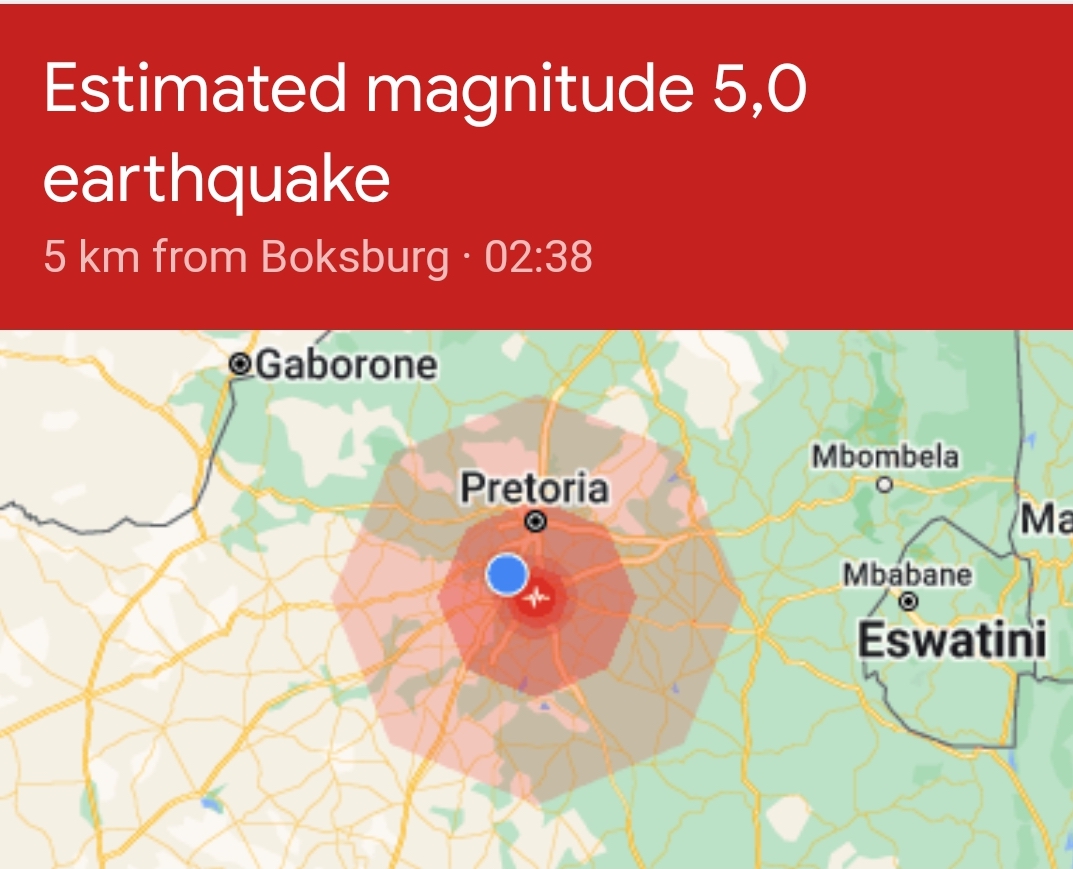Hardware
How your Android phone measured the Boksburg earthquake
Thousands of South Africans woken by an earthquake on Sunday morning turned to their phones to confirm it, writes ARTHUR GOLDSTUCK.
When a 5.0 magnitude earthquake shook the Johannesburg area early on Sunday morning, many thought they were dreaming. They turned to their phones for news, any news. Twitter was flooded with tweets confirming the incident, but of course one cannot trust Twitter for objective truth nowadays.
Instead, confirmation came from the unlikely source of their own phones. If they were using Android devices, that is. Almost immediately, anyone opening Google on their phones were alerted to an earthquake located near Boksburg. Initially it showed a magnitude of 4.7, but that was soon upgraded to 5.0.
The information arrived courtesy of a system introduced by Google in August 2020, allowing all Android phones to be part of the Android Earthquake Alerts System, wherever users live in the world.
“This means your Android phone can be a mini seismometer, joining millions of other Android phones out there to form the world’s largest earthquake detection network,” Google announced at the time.
“All smartphones come with tiny accelerometers that can sense signals that indicate an earthquake might be happening. If the phone detects something that it thinks may be an earthquake, it sends a signal to our earthquake detection server, along with a coarse location of where the shaking occurred. The server then combines information from many phones to figure out if an earthquake is happening. We’re essentially racing the speed of light (which is roughly the speed at which signals from a phone travel) against the speed of an earthquake. And lucky for us, the speed of light is much faster!”
Google said it would use the technology to share a fast, accurate view of the impacted area on Google Search. When you look up “earthquake” or “earthquake near me,” the relevant results for the area pop up (see main image above), along with resources on what to do after an earthquake.
For some of us, that is not enough, especially if we want minute-by-minute updates on the impact, after-effects or verification of the event.
The go-to source for following up is volcanodiscovery.com, which tracks both volcanoes and earthquakes. It also reported a 5.0 magnitude seismic event, and located the quake south of Alberton, just to the east of Johannesburg. Astonishingly, it measured more than 40 quakes above magnitude 4.0 in a 24-hour period. Of these, eight were above magnitude 5, and one above 6.
And this was a normal day in worldwide seismic activity.
If you chose the option, “Quakes near me”, it turned out that there were regular smaller quakes across the region, but most are barely noticeable – evidenced by the face that only a few reports of the quakes are received by the site. The Alberton quake, in contrast, was reported by close to 12,000 people.









